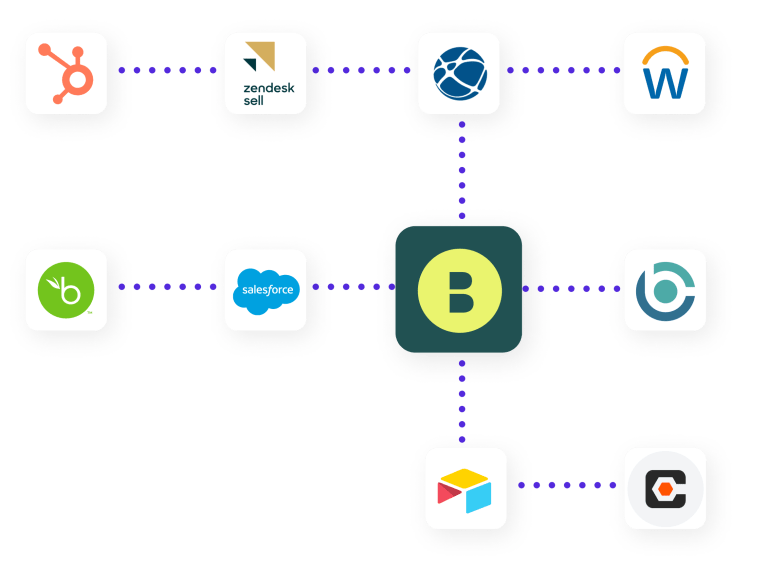Modern construction labor management software consists of cloud-based tools that significantly streamline the workforce coordination process. Keep reading to learn more about labor management software, what it is, and why construction companies need it to thrive in 2021.
Table of Contents
What is labor management software?
The term “labor management software” describes any application designed to facilitate the scheduling, tracking, and overall management of personnel. This software is especially useful in the construction industry, where managing labor is a logistically complex affair given that workers tend to be spread out across multiple job sites at any given time.
In fact, workforce management professionals in construction typically use purpose-built labor management systems like Bridgit Bench. The functionality of these tools goes beyond that of general applications by incorporating industry-standard processes (i.e. project databases and Gantt charts for resource management).
As mentioned earlier, most modern labor management systems are cloud-based, which allows professionals to access their resources from anywhere in the world with an internet connection. This has become increasingly important due to the rise of remote work brought about by the COVID-19 pandemic.
Why construction companies need labor management systems and software
Next, let’s discuss why forward-thinking construction companies are investing in labor management systems.
Managing labor in construction is complex
Construction companies face many industry-specific logistical challenges when it comes to workforce management. For starters, workers are often spread out across multiple job sites, which necessitates careful planning and workforce scheduling.
Construction labor management systems and software applications help greatly in this regard. This is especially true of cloud-based applications that essentially constitute a single source of truth all stakeholders can refer to in order to avoid miscommunication.
Mismanaging labor can be incredibly costly in construction
In construction, labor is among the largest costs management professionals have to worry about. With construction labor costs being so significant, gaps in workforce management processes can derail entire projects, costing companies incredible amounts of time and money.
Construction labor management systems mitigate this risk by helping professionals make data-driven decisions about everything from hiring new employees to scheduling existing workers.
Proper labor management systems ensure regulatory compliance
The construction industry is governed by a variety of regulatory bodies and unions. Good labor management software puts compliance-related data within easy reach of construction HR professionals, greatly simplifying the process and reducing headaches.
Without these labor management systems in place, professionals are often left to rely on disjointed processes that leave major gaps in compliance planning protocols.
Good labor management systems and software increase worker productivity
Employees typically appreciate companies that take their ambitions seriously. A great way for companies to demonstrate this is by having a clear growth plan for each employee. It’s virtually impossible to do this without good labor management systems and processes in place.
Construction labor management professionals use these systems to support the human capital planning process, which entails ensuring the talent within a workforce is managed properly to ensure future workforce needs are met.
Labor management software makes companies future-proof
No company’s workforce needs are static. Rather, they evolve over time. Good labor management software ships with labor forecasting capabilities that help professionals ensure their plans keep up with shifting needs.
Tips for choosing the right construction labor management system
Now that you know the benefits of implementing construction labor management systems, here are some tips for choosing the right one.
Use a specialized system
There are many general labor management applications out there attempting to serve the needs of just about every industry. The problem with these tools is that, by design, they lack specialized features that will make your construction workforce management team’s job easier.
Meanwhile, applications like Bridgit Bench are built with construction management professionals in mind. Consequently, Bridgit Bench also integrates with a variety of industry standard construction management tools, helping professionals create a comprehensive suite.
Look for a system that integrates with other applications your company uses
The workforce management process invariably affects other aspects of construction project management. It’s fitting, then, that good labor management systems should integrate well with a variety of applications (including customer relationship management and building information modeling tools).
Try before you buy
All good labor management software companies offer demos of their applications. Take advantage of these demos by letting key stakeholders try the software and determine whether it ultimately fits with your company’s workflow.
Schedule a demo with Bridgit Bench.
Keep key stakeholders engaged in the software selection process
Purchasing labor management software licenses for your workforce professionals is one thing. Ensuring they actually make the most of it is another.
This all starts with keeping key stakeholders involved during the software selection process. If the professionals who will ultimately be using the software have a say in choosing it, they’ll typically be much more likely to actually use it later on.
Frequently asked questions about labor management software
What is the best workforce management software for construction?
Bridgit Bench consistently ranks among the top-rated workforce management applications for construction companies. Check out our case studies featuring dozens of satisfied general contractors and subcontractors.
What does WFM mean?
The acronym “WFM” stands for “workforce management.” It describes all activities associated with coordinating workers, ranging from day-to-day scheduling to long-term growth planning.
Who uses labor management software?
Labor management software has many end users, including workforce management professionals and general laborers. The latter group typically uses these applications to keep up to date regarding scheduling and other important communications from workforce management staff.
How much does labor management software cost?
The cost of labor management software can vary based on several factors, including the number of licenses you require and, of course, the software you choose. Request a demo of Bridgit Bench, which will include a walkthrough of the application and its pricing based on your company’s needs.
We hope this article has helped you understand what labor management systems are, why your construction company needs one, and how you can make the best choice. For more articles about workforce management systems and processes, visit our blog here.



